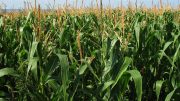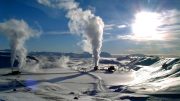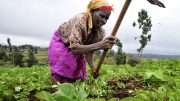Travel with these journalists as they explore how people in Peru and Colombia are coping with rising temperatures.
It’s not news that climate change is affecting the world’s mountain ranges, along with their human inhabitants and their ecosystems. In these four stories about the Andes, the general becomes specific and distant places come to life.
Dan Collyns (The Guardian) and Max Nathanson and Griffin Bohm (Thomson Reuters) take us to Peru’s Cordillera Blanca and its fast-shrinking glaciers. Lake Palcacocha, which sits above the city of Huaraz in Peru’s Cordillera Blanca, threatens at least 50,000 people with a catastrophic flood; nearby farmers watch their fields dry up and their seed stock be destroyed by upward-migrating pests; some of the water turns acidic, killing animals; tourism drops off and mountain climbing guides turn to helping mining companies find new places to dig. Efforts are underway at the lake to install safety features and an early warning system that doesn’t require a lonely human sentinel.
With Elda Cantú on public radio, we move to the puna, the vast ecosystem that runs along the Andes above treeline and below the glaciers and permanent snow. There, glacial shrinkage is drying out the wetlands that sustain herds of sheep, cows, alpacas, llamas, and vicuña. In one area seven hours east of Lima, working with reserve managers and scientists, local people are tackling this problem by finding, restoring, and updating pre-Spanish and pre-Inca water management structures and practices.
Finally, we move north into Colombia, along this same high-elevation zone into the closely-related ecosystem called the páramo. In a comprehensive and enticing blog entry for Columbia University, Sarah Fecht takes us along as she visits scientists investigating that unique and at-risk landscape, studying hydrology, the unusual local atmosphere, plant growth rates, glacier retreat, and more.
By SueEllen Campbell
March, 11 2019
This article is originally published by YALE Climate Connections





